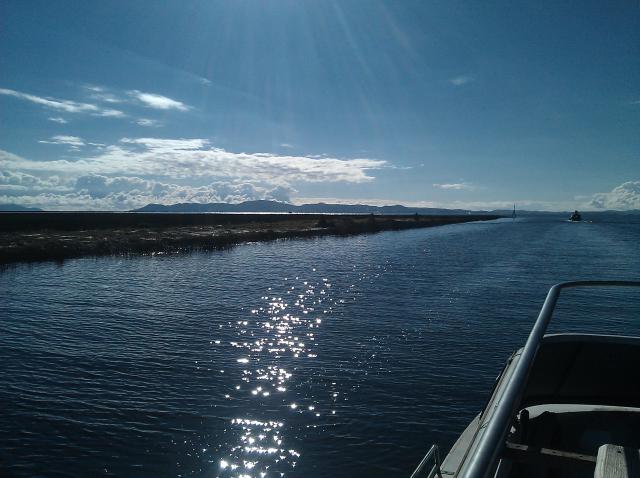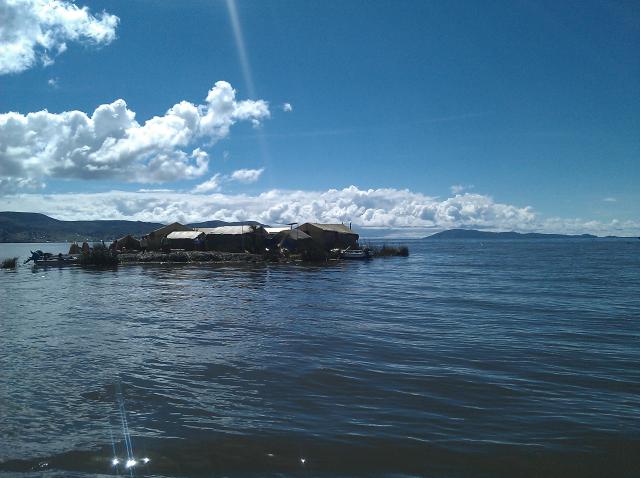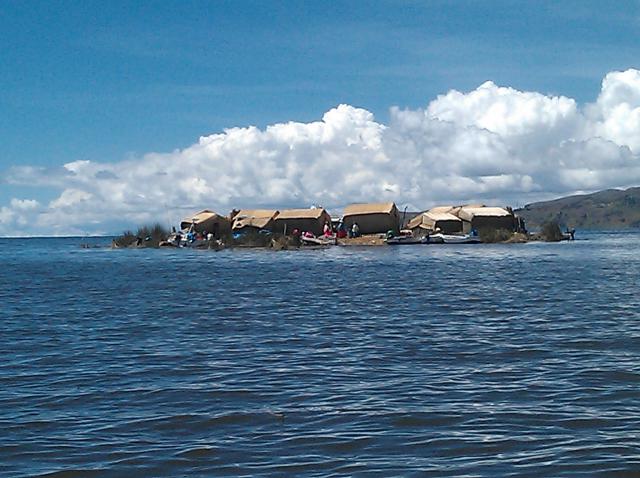Puno: floating islands and Taquile
Today I went to one of the floating islands of the Uros, and later to the island of Taquile. It was a quite long day, and I returned pretty tired.
I left in a boat at about 7am. The journey over the Lake Ttiticaca to one of the floating islands of the Uros took about 1½ hours.

Once we arrived to the floating island of the Uros, our guide and the chief of the island explained to us how such an island is built. All is made of totora reeds, which grow abundantly in the Lake Titicaca. The construction of an island takes about 1½ years, and then the island lasts for about 30 years, and after that they have to build a new island. On one island lives one extended family in some small huts.
Traditionally, the Uros lived from fishing and hunting of the birds of the lake, but at least the Uros of the island we visited today live from tourism. All of the island was working for the tourists, and all was very commercialised. But well – they have to live from something, and why not from tourism.


After a while we left the floating island, and went to the island of Taquile, where about 2000 people live who mainly speak Quechua. Today, they too live a lot from tourism.

We walked a bit over the island up to the island's main square, and then we went to one of the houses to have lunch. The island is very quiet – there are no cars on the island, and life seems to be pretty quiet. People live from tourism, agriculture, and fishing.
We went down again to the main port of the island, and returned to Puno – another journey of 2½ hours by boat.
- Alana Queer's blog
- Log in to post comments
 Español
Español
